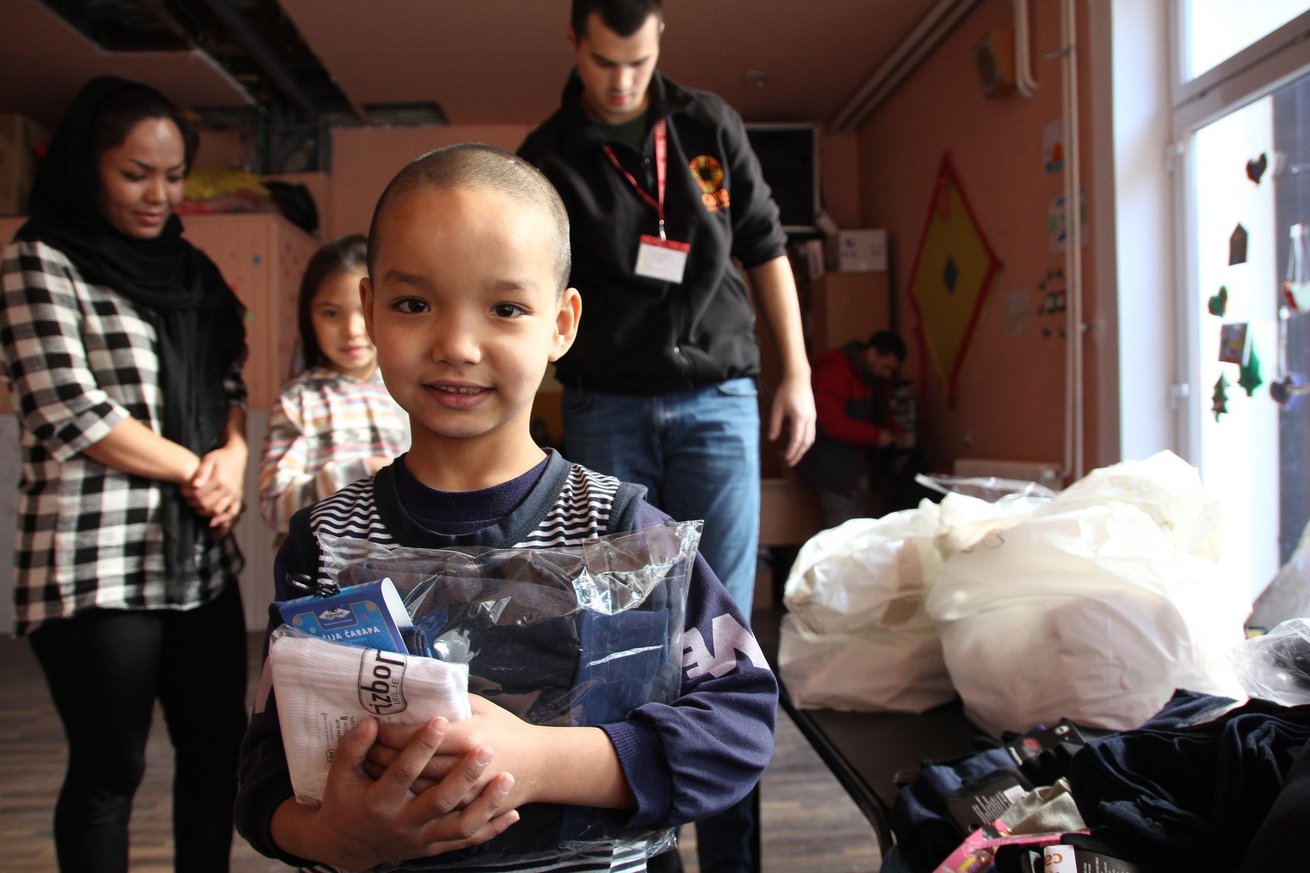By Sabine Wilke, CARE
Sabine Wilke shares her experience in Serbia where CARE is supporting refugees who were stranded when European borders closed. As winter begins, Sabine describes the difficulties of life as a refugee, but also the hope that remains and how organizations like CARE are making a difference.




I recently bought a new winter coat and was justifying the rather expensive purchase to myself with a strong argument based on practicality, not fashion: I would never be cold anymore. You probably know the feeling. Whether it’s waiting for a bus in the morning for your commute or turning on the cold car’s engine; walking your kids to school, seeing your own breath turn to chilly fog. There’s not much worse than being cold.
On a day in mid-December, wearing my new coat, I stand in Sjenica in the South West of Serbia. This town sits on a plateau, with the wind mercilessly blowing across the plains and temperatures sitting way below -10 degrees Celsius. I see children playing in the snow. The scenery could be idyllic, but it’s not. Some of the children are only wearing light sweaters, others have a strong cough and some glance at me with a look in their eyes that tells of the horrors they have witnessed. These children are refugees from Iraq, Afghanistan, Syria and other places where conflict is raging.
Yes, these items are not much, they are not a visa to get through the borders, and they are not the future these people have risked their lives for. But they offer a little warmth during cold times.
Sabine Wilke
When the borders were closed in central Europe early in 2016, thousands of people on the move got stuck in the Balkans. Serbia still sees an influx of 200 to 250 new arrivals each day. People are being transferred to official camps, most of which are former hotels, factories or deserted gas stations. Their desperation is tangible when I walk through an overcrowded building.
There are 15 to 20 people in one room. They put blankets on their bunk beds for a little privacy and they line up to use the toilet. They wait for any information, a beacon of hope. They can apply for asylum in Serbia or for family reunification if one of their relatives has made it to Europe, but procedures are slow and information is difficult to find. Refugees can also pay smugglers to get them across the border, but patrols are strict and reports of abuse in detention centers are frightening. Spending your day waiting, your children not allowed to go to school, waking up in the morning freezing, not knowing what the future holds – this is the daily reality for hundreds of thousands of refugees who fled their countries to seek safety and freedom.


Here in Sjenica, CARE is distributing warm winter clothes and I am happy to see some of the kids that were playing outside later in line with their parents. The volunteers who organize the distribution find the time and patience to help every child select the right pair of boots, a hat and gloves that fit. Adults receive blankets, hygiene items and bed sheets. They can choose the color of towel they like, probably the only choice and gesture of respect they have been given in a long time. Yes, these items are not much, they are not a visa to get through the borders, and they are not the future these people have risked their lives for. But they offer a little warmth during cold times. The faces I look into didn’t choose to become dependent on aid. They fled war and persecution to save their lives and the future of their children.
This holiday season, I decided to donate the same amount I spent on gifts to CARE. Yes, I work for CARE and earn my living with this job. But I am also a very privileged citizen of a free, wealthy country, with a steady income and the means to share, to help. I consider this a privilege. I have seen first-hand how carefully and efficiently the money donated to CARE is spent in our programs around the world, just like in Serbia. I have seen again and again how women and girls who are most vulnerable in desperate situations are placed front and center in CARE’s response.
Don’t let the noisy news stream paralyze you. Yes, there continues to be war and despair around the world. Yes, we all sometimes feel like wanting to cocoon in our little world and not be confronted with all the suffering and bad news mankind produces each day. But that is not going to help the children building a snowman in Southern Serbia. And it is not going to make this world a better, more just place. If you ask me, there can never be enough drops in the ocean.

